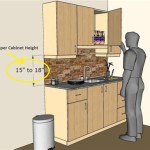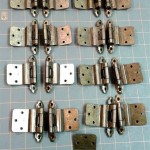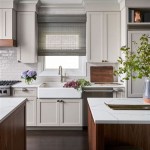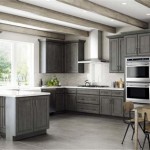Essential Aspects of Standard Kitchen Cabinet Height For Uppers
Standard kitchen cabinet height for uppers is a crucial element in kitchen design that plays a pivotal role in achieving both functionality and aesthetics. Whether you're a seasoned chef or a home cook, the height of your upper cabinets can significantly impact your comfort, storage capabilities, and the overall appeal of your kitchen space.
1. Ergonomics and Comfort
The height of upper cabinets should prioritize ergonomics and comfort. If they're too high, you'll find it challenging to reach items stored on the upper shelves, leading to strain and inconvenience. Conversely, cabinets that are too low can obstruct your view and hinder efficient work. The ideal height allows you to comfortably reach the top shelves while maintaining a natural posture.
2. Storage Capacity
Cabinet height directly influences storage capacity. Higher cabinets provide more vertical storage space, allowing you to maximize the use of the available wall space. However, ensure the cabinets don't extend too high, as this can make it difficult to access items in the rear.
3. Aesthetics and Proportion
The height of upper cabinets contributes to the overall aesthetics and proportion of your kitchen. It helps create a visually balanced and cohesive design. Proper cabinet height complements the height of your countertops, appliances, and other elements, ensuring a harmonious flow and a visually pleasing appearance.
4. Lighting Considerations
Upper cabinet height plays a crucial role in lighting. If the cabinets are too high, they can block natural light from windows or overhead lighting fixtures. Conversely, cabinets that are too low can be overpowered by under-cabinet lighting, creating an uneven distribution of light. Proper cabinet height allows for optimal lighting, ensuring a well-lit and functional workspace.
5. Industry Standards
Industry standards provide guidelines for standard kitchen cabinet height for uppers. The most common height is between 36 inches and 42 inches from the floor to the bottom of the cabinet. This height is generally suitable for most individuals, providing a comfortable reach and ample storage capacity. However, you can adjust the height slightly to accommodate your personal needs and preferences.
Conclusion
Standard kitchen cabinet height for uppers encompasses various essential aspects that influence the functionality, aesthetics, and overall design of your kitchen. By carefully considering ergonomics, storage capacity, aesthetics, lighting considerations, and industry standards, you can optimize the height of your upper cabinets to create a kitchen space that meets your specific needs and enhances your cooking experience.

Height Between Upper Cabinets And Counters Kitchen Elevation

Standard Upper Cabinet Height Bulacanliving

Standard Upper Cabinet Height Conventions And Codes Kitchen Cabinets Measurements Sizes

Kitchen Cabinet Sizes What Are Standard Dimensions Of Cabinets

Cabinet Countertop Clearance To Be Mindful Of When Considering Wall Cabinets

Know Standard Height Of Kitchen Cabinet Before Installing It

Kitchen Unit Sizes Cabinets Measurements Height Cabinet

How High Should Be Your Upper Kitchen Cabinets

How High Upper Cabinets Should Be From Your Floor And Countertop

Pin By Nicole On Measurements Kitchen Cabinets Height Cabinet Sizes
Related Posts








